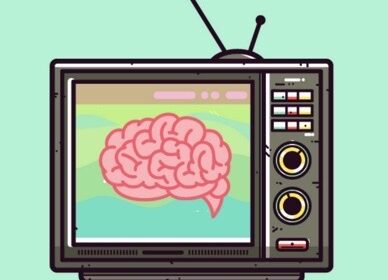Mental Health In the Mass Media

SRINIDHI VANGALA – In recent years, there has been an improvement in awareness of mental health as people have been working to de-stigmatize issues pertaining to mental health. Many people agree that mental illness is stigmatized and needs to be talked about more openly. It seems that many prominent members of society, from politicians to the Pope, have expressed a desire to open up the conversation—but efforts often end there. From 2019, there has been an estimated 1.38 million suicide attempts in the United States alone. Some experts think that we’re in the middle of a public mental health crisis. Yet discourse always seems to stop before the actual conversation begins. If a majority of people agree that we should be talking about mental health issues more, then why has there been a continued silence in a time of need?
Mental health issues are often difficult and intimidating to discuss as people may worry that others will not be able to relate to their feelings or that others may not be able to understand a problem they cannot see. As a result, when light is shed upon mental illnesses in mass media and pop culture, it can come as a relief to those who are suffering knowing that they are not alone in the battle. Though there is a representation for these individuals in the media, it is not always the healthiest. Many shows and films have a poor grasp on what it really means to have a mental illness and continue to perpetuate stereotypes and contribute to the stigmatization of people experiencing these conditions. Mass media is one of the primary sources of information when it comes to certain disorders such as depression, schizophrenia, and depression. Television has the power to act as a portal into the lives of characters that may have issues which we may not witness or understand in real life. Based on these characters that are represented in pop culture, it is easy to believe lots of myths about people with mental health illnesses.
This is a concern these negative portrayals can contribute to the stigma surrounding mental illness, making those who need it less likely to seek help, according to a 2008 study in the Journal of Health Communications. The way these fictional characters experience and cope with mental illness can directly affect the way real-life people understand and react to the conditions.
Recent shows like 13 Reasons Why, Crazy Ex-Girlfriend, Never Have I Ever, and One Day at A Time have included characters or situations which shed light upon a certain mental health illness.
Here, insensitivity is the biggest issue at play. The mistake that many show runners may run into is maybe trying too hard to get things right. 13 Reasons Why tried to be a perfect encapsulation of the diverse array of mental health issues teenagers experience today; by doing so, it set itself up for failure. In many instances, TV shows and movies do not present people with mental illness in a positive, or even sympathetic, light. In fact, a 20-year study in the Journal of Health Communication determined mentally ill characters were often depicted as peculiar and dangerous. These depictions can reinforce negative stereotypes of people with similar conditions in real life.
Poorly written story lines about mental health are plagued by extremes: romanticizing mental illness or vilifying it, portraying people with mental illness as only perfect victims or unhinged psychopaths, letting mental health disorders define a character, or adding it as a “quirk.” Mental illness is often used as a trope that a character just happens to have but there is never any true discussion around the topic that helps people view people with mental illness through a more empathetic lens. This is what needs to be changed.
All of this isn’t to say these tropes can’t be used to create meaningful television, or that show runners have to treat mental illness as some after-school special in order to educate their audiences and be 100 percent truthful. But when a show handles such heavy subject matter, its creators should demonstrate a respectful understanding of the issues they’re raising. There are plenty of ways to balance engaging characterization, honest depictions of mental illness, and evocative storytelling. Although discussing mental health can be difficult and even controversial, when done well, proper representation in the media is more than “cool”—it can be life-changing for some individuals.
Copy Editor: Kristin Keith
Photography Source: Shweta Mistry,
